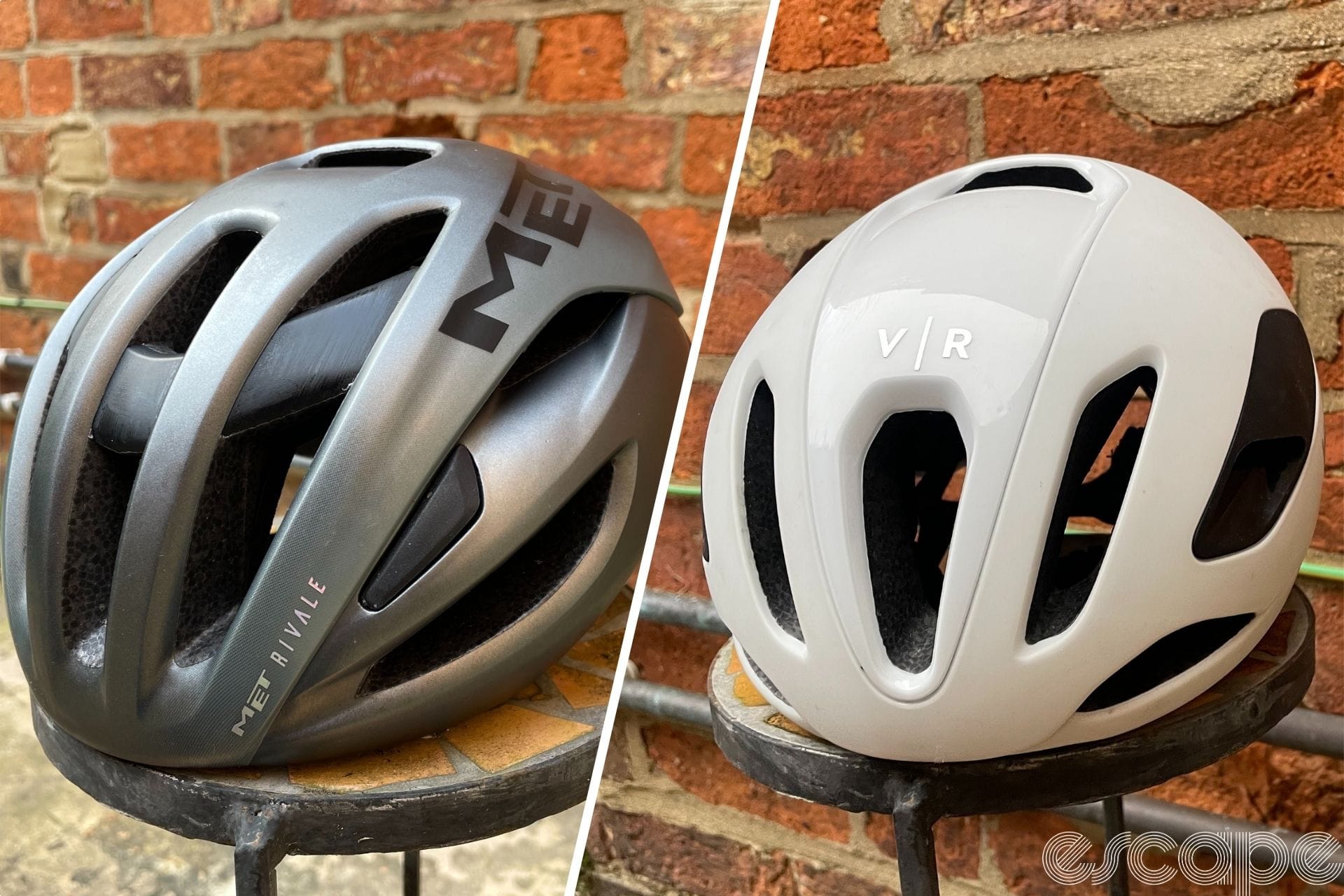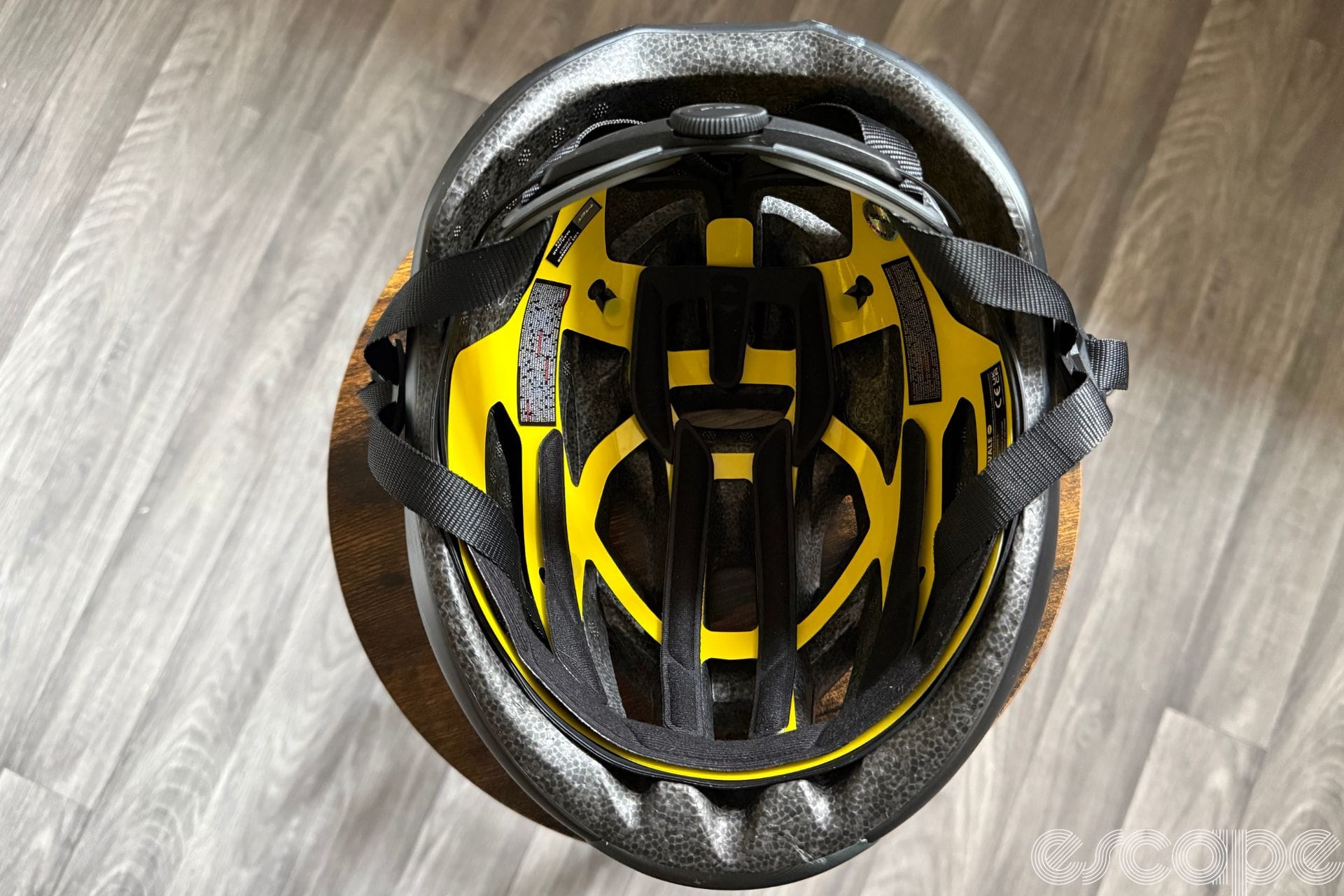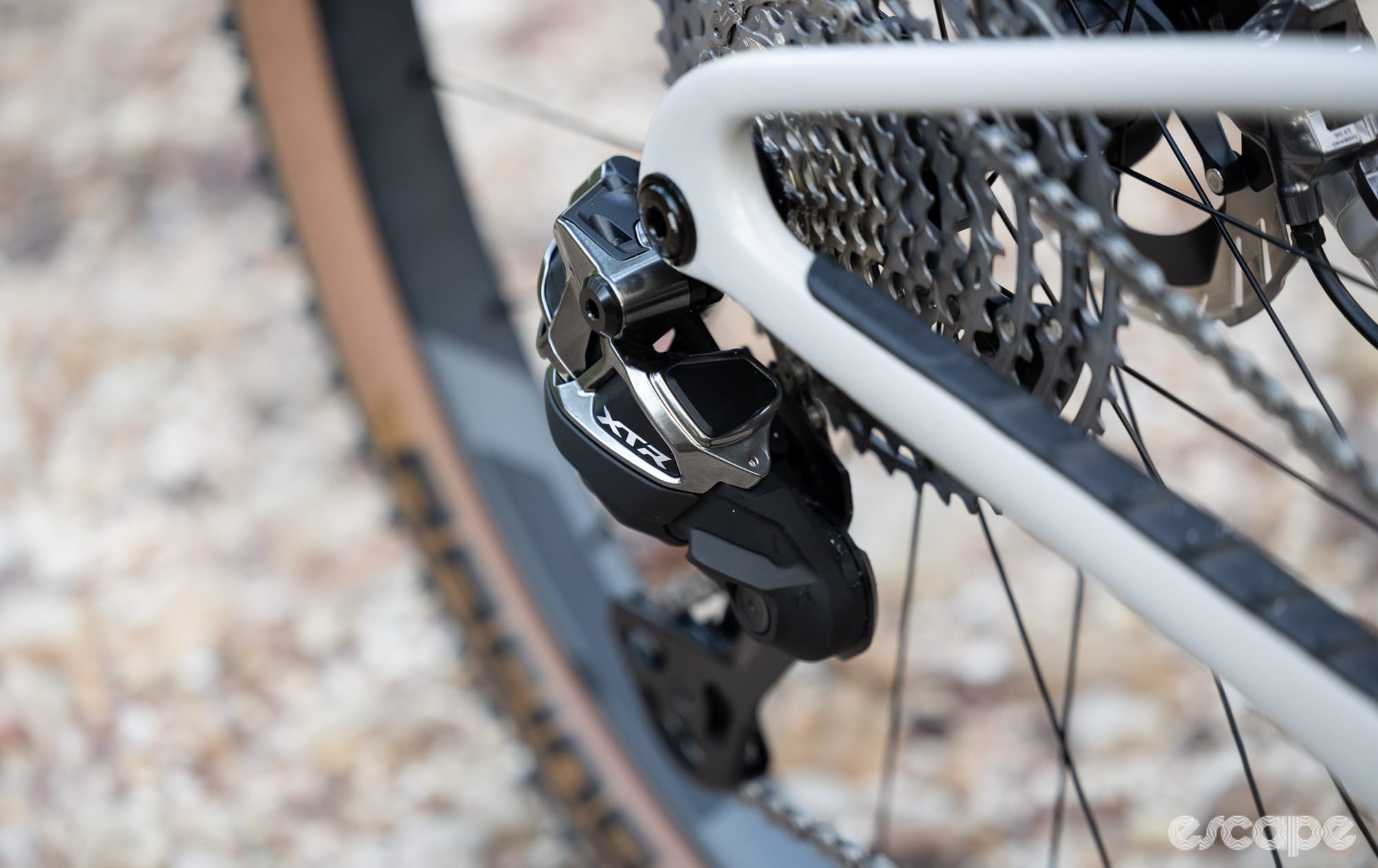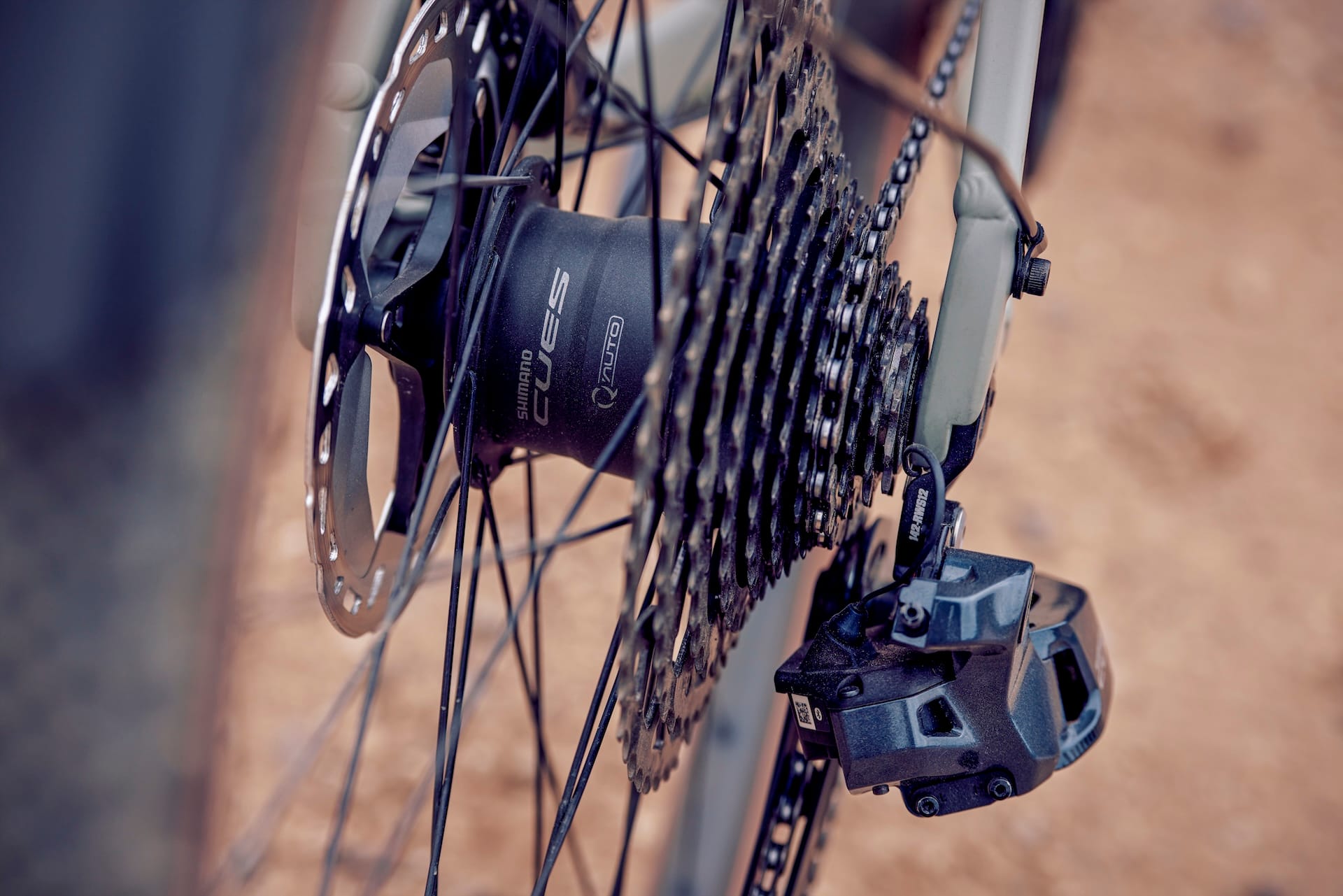Updated in 2023, the Rivale is MET’s mid-tier aero-flavoured do-it-all helmet. The design looks to combine aerodynamic consideration with a highly ventilated profile. Sitting one step down in MET's range from the Trenta – which shares the same profile as the Trenta 3K Carbon as used by Tadej Pogačar – the Rivale shares some of its design cues whilst putting its own twist on things.
In terms of price, MET has positioned the Rivale right in the middle of the mid-tier helmet category. Retailing for £150 / €170 / US$200 / AU$270 it sits between the Kask Mojito 3 (£140 / €150 / US$170 / AU$250) and Specialized’s Propero 4 (£165 / €190 / US$200 / AU$310).
The Rivale is also decently light given that some aero consideration has clearly gone into its design. This is partly achieved by the inclusion of no less than 18 vents, which help to drop some grams, but also by making the form of the helmet a little bit smaller than other helmets tend to be for any given size.
Highs: Close-fitting, secure helmet that is comfortable and holds glasses well.
Lows: Ventilation doesn’t work optimally with the Mips liner, the retention-system band sits lower than the helmet shell around the ears.
Hands on with the Rivale
On the first try the helmet felt, in general, very compact. Compared to other helmets of the same size (small 52-56 cm), the actual opening for one’s head looks smaller.
In terms of styling, the Rivale borrows cues from Van Rysel's FCR and Kask’s Mojito 3 with an aerodynamic rear portion that is married to a well-ventilated front section. I was actually surprised just how many vents the Rivale had, with 11 across the front and top portion of the helmet.

At 240 grams for a size small (EN 1078 certified version), the Rivale weighed in exactly as claimed. That is 13 grams lighter than Van Rysel’s FCR, and 37 grams lighter than Specialized’s Propero 4. It is however 30 grams heavier than Kask’s Mojito 3, but this can be explained largely by the different style of helmet, with the Mojito being a purely vented helmet with no visible hints at aero considerations.
Met offers the Rivale in eight different colour options, which include a white holographic model I found particularly eye-catching. Beyond this, the classic black or white models are offered along with more characterful options like a fluorescent green model and a textured bluey-green that the Italian company calls “motion blur." Those options should cater to most riders' preferences and it is nice to see the brand offering designs beyond simple block colours.
Fit and feel
The best way to describe the feel of the Rivale is “snug." This is not necessarily a negative – it means the helmet feels like it sits nicely on your head without a large external profile that has you looking like a mushroom.
Much like the Mojito 3, the Rivale is one of the more rounded helmets to be tested in this mid-tier review series. Although it didn’t provide the same levels of customisation in the fit as the Kask, I was still able to find a fit that worked well for my more oval head shape.

Part of the reason behind this is what MET calls its Safe-T Upsilon retention system. Similar in concept to Lazer’s Roll-Sys system, this uses a 360º head belt that conforms to the shape of your head better than traditional helmet retention systems. The system aims to remove pressure points on the skull, and from my time with the helmet, I can confirm this to be the case. To test this I went out on a ride with the helmet set tighter than ideal. Even by doing this, I found that the helmet remained comfortable and did not lead to any sort of pressure spots or headaches.
Did we do a good job with this story?




